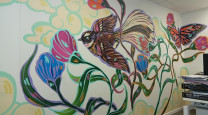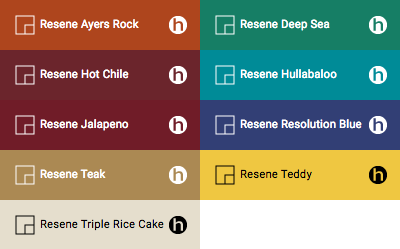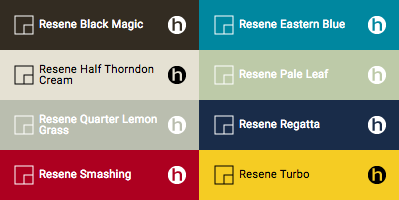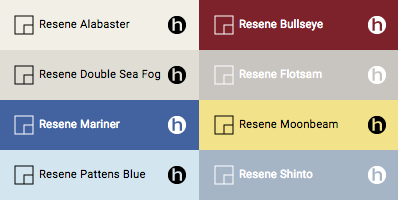A world of colour
Colourist Megan Harrison-Turner takes us to exotic places, and shows how colour can bring a little bit of overseas into our homes.
Moroccan spice
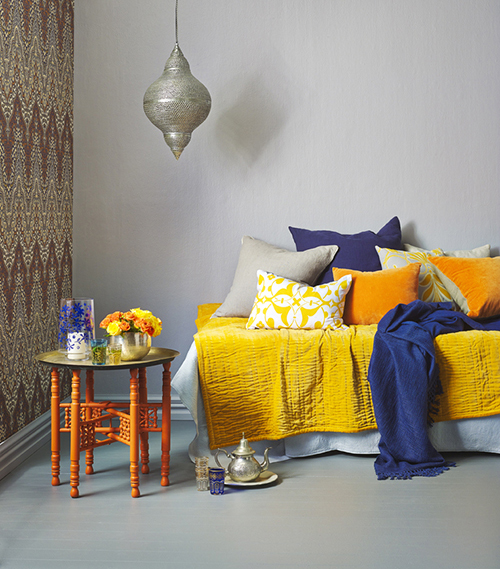
Inspiring writers, poets and designers for decades, the exotic interiors of Morocco can be as busy or calm as you like. The whites are often warm, mixed with hot spicy colour, vivid turquoise and terracotta that has a pinkish undertone. See below for our Resene selection for your next Moroccan-inspired room, and read on for more decorating tips that will transport you to the bazaar:
· Use a matte paint finish such as Resene SpaceCote Flat for an aged chalky look.
· Use rough, textured timber furniture and baskets.
· Add plenty of ceramics, tiles and mosaics in classic Moroccan patterns.
· Create a low day bed piled with velvet and linen cushions.
· Take inspiration from a Persian rug and decorate in rich reds with touches of Berber indigo blue. Use traditional woven camel bags as cushions.
· Add sheers and textured drapes in soft tea-stained creams.
· Use aged metals like brass and pewter.
· Introduce and let the accessories do the talking in traditional Moroccan shapes.
Asian influence
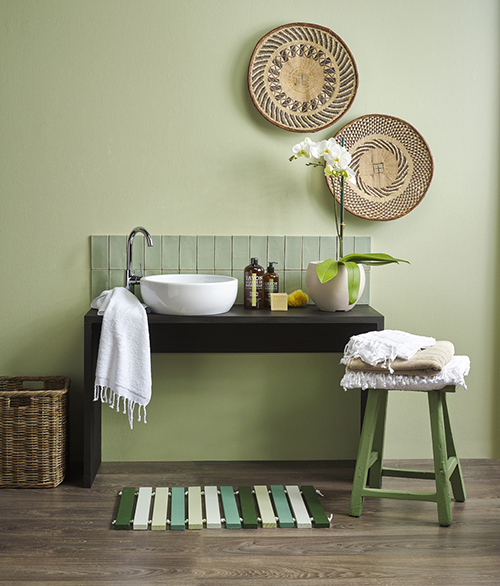
There are two roads to the Asian aesthetic. There are the pared back East/West zen-style interiors made famous by UK designer Kelly Hoppen with limited colour palettes and clean lines. Then there is the much richer chinoiserie look with a fusion of Asian furniture and fabrics, and jewel-like colours. It’s the sort of maximalism the French and English went for in the 18th century (chinoiserie is French for Chinese-esque).
· For a zen approach, use dark stained timbers: check the Resene Colorwood natural wood stain range for options.
· Use soft sage greens and green-edged whites as your backdrop colours.
· Add texture and ethnic twists – a Buddha head, a wide woven tray, bamboo matting.
· For the chinoiserie approach, add accent colours in jewel tones like emerald, ruby, amethyst and sapphire.
· Use intricately carved furniture in red or black lacquer with gold insets.
Nordic lights
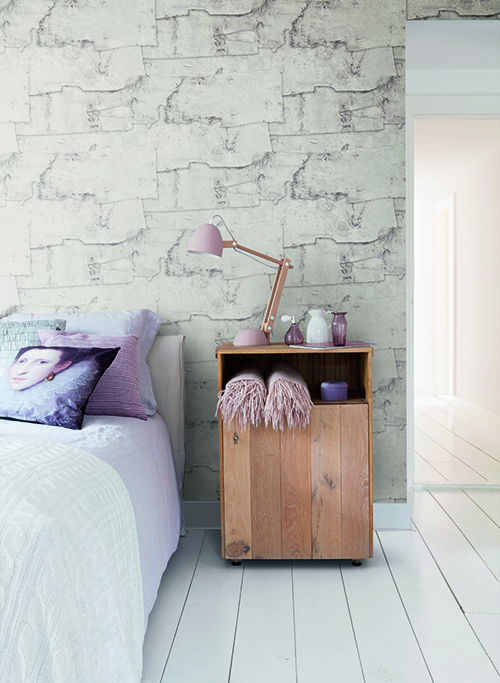
Whites are especially important in Scandinavian countries where the light needs to be bounced around as much as possible to counter the long dark winters. Pale wood furniture is favoured in honest and unpretentious shapes, along with pale floorboards. At this end of the world, we may not suffer long dark days but these calm schemes are a tonic to the hurly burly of everyday life.
Blues are a strong secondary colour. They are either strong and clean, or softened to pastels with touches of grey. There’s also a careful use of clear reds and soft yellows.
· Explore every type of white in the Resene collection – from antiqued bone shades to grey-edged crisp alabasters, and chalky milk whites.
· Add handcrafted details – chunky knitted cushions and block printed art
· Strew animal hide rugs on whitewashed floors (use Resene Colorwood Whitewash) and on the furniture. Use monochromatic art.
· Use pale timber furniture with a clean Shaker-style aesthetic.
· Try secondary colours in pale sea blues and smoky grey, or deeper true blues.
· Love the look of the wallpaper in the picture above? It's from the More than Elements range (code: 49763) available at Resene ColorShops.
Published: 09 Dec 2015
Do you have a home full of wonderful Resene paint and colour? Send us some snaps by emailing [email protected].
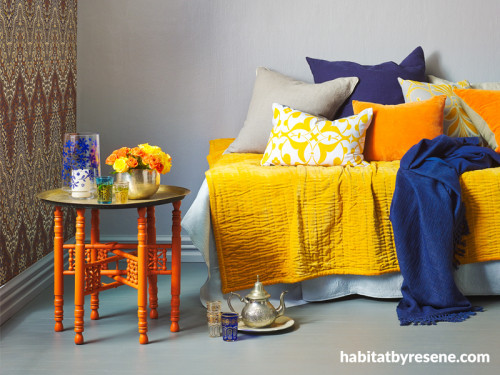
See this room setting come alive, with tips and tricks to getting the look. ?
Watch the video Go Global
pictures
Melanie Jenkins. Styling by Claudia Kozub.
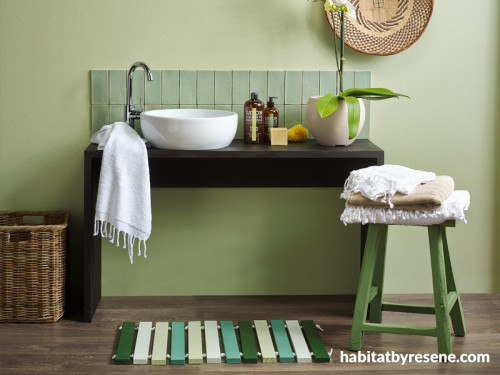
We reveal the styling tips to creating a zen bathroom. Watch the video Eco meets zen
pictures
Melanie Jenkins. Styling by Claudia Kozub.


Resene Double Sea Fog
the look
If you're stuck on what
colour to use or need colour
advice, try out the Resene
Ask a Colour Expert service.


Resene Double Sea Fog
the look
If you're stuck on what
colour to use or need colour
advice, try out the Resene
Ask a Colour Expert service.


